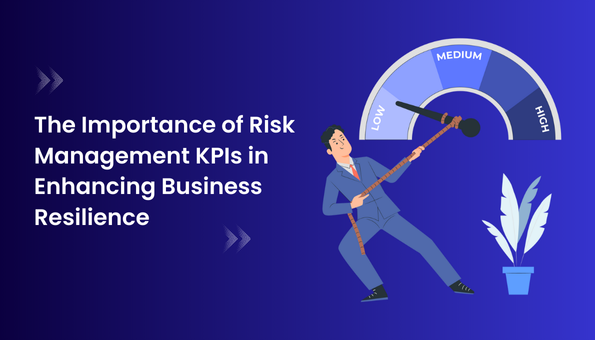Exploring the Value of Risk Management for Effective Decision-Making Methods
In the elaborate globe of organization, Risk Management arises as a vital variable in the decision-making procedure. The ability to identify potential risks and chances, and strategize as necessary, can spell the difference between success and failing.
Recognizing the Idea of Risk Management
Risk Management, an essential element in decision-making, is often misinterpreted or oversimplified. Risk Management entails organized and disciplined approaches, making use of information and insightful evaluations. From economic uncertainties, lawful liabilities, critical Management errors, to crashes and all-natural calamities, it attends to different risks - importance of risk management.
The Duty of Risk Management in Decision-Making Processes
In the world of strategic preparation and organization procedures, Risk Management plays an indispensable duty in decision-making processes. It aids in identifying possible risks and unpredictabilities that can affect the success of organization goals. By tracing these risks, business can formulate techniques to mitigate their effect, ensuring company continuity and security. Risk Management thus ends up being a vital tool in decision-making, aiding leaders to make educated selections based upon an extensive understanding of the dangers included. It urges a proactive technique, allowing organizations to expect and prepare for feasible future scenarios. This considerably lowers the chance of negative repercussions, promoting much more reliable and reliable decision-making techniques. Risk Management serves as a crucial component in the decision-making processes of any kind of company.

How Risk Management Improves Strategic Preparation
In the context of strategic preparation, Risk Management plays a crucial duty. Launching with the identification of potential risks, it better reaches the execution of Risk mitigation actions. The role of Risk Management is not fixed but vibrant, as it demands constant tracking and adjusting of techniques.
Identifying Possible Risks

Applying Risk Reduction
Having actually developed the importance of determining potential risks, the next step is to explore Risk reduction. This procedure involves developing and executing methods to handle determined risks efficiently. It is an important element of tactical preparation as it boosts decision-making by decreasing prospective unfavorable results. Risk reduction approaches can vary from Risk avoidance, Risk transfer, to risk decrease. Each method must be tailored to the specific Risk, considering its prospective effect and the organization's Risk resistance. Reliable Risk mitigation calls for a deep understanding of the Risk landscape and the potential influence of each Risk. This understanding enables read more organizations to focus on dangers and assign sources successfully, making sure that the most substantial dangers are dealt with first.
Monitoring and Readjusting Strategies
Though Risk reduction is an essential step in strategic preparation, continual surveillance and modification of these techniques is similarly essential. It also provides a possibility to review the success of the Risk Management measures, enabling adjustments to be made where necessary, additional boosting calculated preparation. Surveillance and adjusting Risk Management strategies is a vital component for improving a company's durability and strategic preparation.
Instance Researches: Effective Risk Management and Decision-Making
In the world of business and financing, effective Risk Management and decision-making frequently offer as the pillars of flourishing business. These instances highlight the value of sharp Risk Management in decision-making procedures. These cases highlight the important role of Risk Management in tactical decision-making.
Devices and Techniques for Efficient Risk Management
Navigating from this source the detailed labyrinth of Risk Management needs the appropriate set of devices and strategies. These tools, such as Risk registers and warm maps, help in recognizing and examining possible threats. Methods consist of both measurable approaches, like level of sensitivity analysis, and qualitative approaches, such as SWOT evaluation. These aid in focusing on threats based on their prospective influence and probability. Risk reaction approaches, an essential part of Risk Management, involve accepting, avoiding, transferring, or mitigating threats. Monitoring and managing dangers, with routine audits and testimonials, make certain that the strategies remain effective. With these strategies and tools, decision-makers can navigate the complex landscape of Risk Management, thereby assisting in educated and reliable decision-making.
Future Patterns in Risk Management and Decision-Making Approaches
As we explore the large landscape of Risk Management, it comes to be apparent that the strategies and tools used today will certainly proceed to advance. The idea of Risk society, where every member of a company is conscious and included in Risk Management, will obtain much more prominence. These trends proclaim a more inclusive and proactive technique in the direction of Risk Management and decision-making.
Final thought

Risk Management therefore becomes an essential device in decision-making, aiding leaders to make enlightened options based on visit the site an extensive understanding of the risks entailed. Risk mitigation approaches can range from Risk evasion, Risk transfer, to risk decrease (importance of risk management). Efficient Risk reduction requires a deep understanding of the Risk landscape and the prospective impact of each Risk. Risk feedback techniques, a key part of Risk Management, involve approving, preventing, transferring, or mitigating dangers. The concept of Risk culture, where every participant of an organization is conscious and involved in Risk Management, will obtain much more prestige